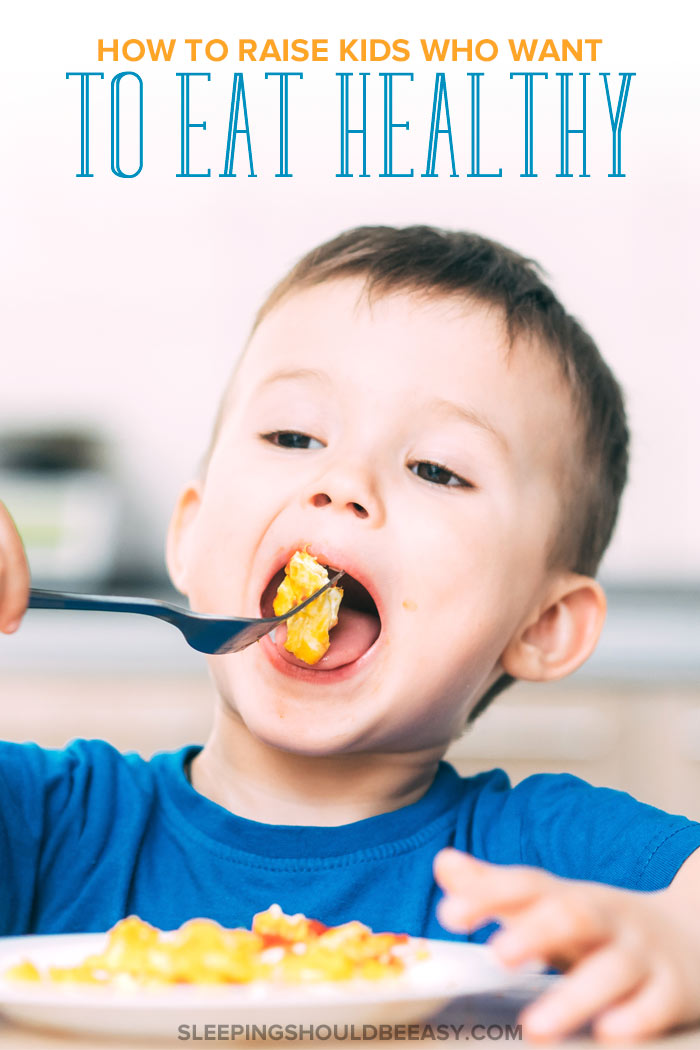How to Raise Kids Who Want to Eat Healthy
Want to encourage your child to not only eat good food, but WANT to? Discover effective tips on how to raise kids who want to eat healthy.
 I can always tell when my kids don’t love one of the meals I cook from the slow pace they eat. I also know that they’ll always prefer a peanut butter and jelly sandwich over a vegetable stir fry and whole grains.
I can always tell when my kids don’t love one of the meals I cook from the slow pace they eat. I also know that they’ll always prefer a peanut butter and jelly sandwich over a vegetable stir fry and whole grains.
But, for the most part, they know the importance of eating healthy food and reserving sweets for the occasional treat. They’ve learned to eat quinoa salad with broccoli and black beans and can talk about which vegetables came from our garden. And these days, after watching Live to 100, we’ve even been more motivated to live a quality life through eating well.
In other words, they’ve had a good track record of not only eating healthy food, but wanting to as well.
So, how can we raise kids who enjoy a good, healthy meal? Where we don’t have to hide vegetables in our food just so we know they’re getting the nutrients they need? After all, this isn’t only about nutrition or avoiding food battles, but about having a good relationship with a variety of healthy food.
Take a look at these tips that have worked for me:
Table of Contents
1. Offer your child the same food you eat
Do you have a “kids menu” in your home? While the adults eat salmon cakes and salad, the kids eat toast and pasta with no sauce.
Here’s the thing: cooking a separate meal enables picky eating and doesn’t allow them to give other food a chance. If they know they can always have french fries and soda, then they’ll learn to only eat that way.
By offering the same food for everyone, you’re giving them a glimpse of how to try and eat a variety of food. By serving and eating the same food as the whole family, they’ll follow suit instead of requesting their own special meal.
Free printables: Need a way to organize your weekly recipes and shopping lists? Join my newsletter and get your printable meal planner—at no cost to you! You’ll have an organized way to record your recipes and shopping lists. No more wasting time or feeling frazzled!
2. Offer a variety of food
Instead of preparing a “kids menu,” cook a healthy meal, then serve it with something you know your kids will enjoy. For my kids, that’s fruit. They eat their main meal first—at least try a few bites—along with their fruit.
Not only should each meal have a variety, but your meals should be different too. Don’t just make soup and pasta every day. Include different types of meals, such as seafood, quiche, and pizza in your weekly meal plans.
3. Don’t make dessert or junk food a reward
Have you told your kids, “Finish your plate before you get ice cream and cookies”?
Seems reasonable since they’ll be motivated to finish their main meal. The downside? They see dessert and junk food as the desirable food and everything else the means to get there.
So yes, highlight the rarity of a slice of cake or the chips they’ll get to eat. These are, after all, the special treats that they are (or should be!).
But at the same time, celebrate the main meals too. For instance, say with gusto, “We’re having roasted veggies tonight!” and they’ll pick up on your excitement.
4. Cook with your kids
Cooking with kids isn’t always the easiest or cleanest activity. There’s the business of having to wash their hands and reminding them not to sneeze into the bowl of salad dressing you just made.
But including them in cooking includes plenty of benefits.
They’re more willing to eat the food they just invested time and effort into making. They’re proud of their work and want to eat the results.
They’ll also see how you prepare their meals. I want my kids to understand where fruits and vegetables come from and to know the effort and care that goes into preparing food.
To cook with your kids, you can:
- pre-chop food and have them scoop the bits into a bowl
- encourage them pretend-cook alongside you
- ask them to put their utensils and napkins on the table
By involving them in the kitchen, they’re more likely to eat the healthy food that they invested their efforts into.

5. Grow your own food
Growing your own food—in whatever scale you can—is a fantastic way to tie an activity into the healthy meals your kids eat. Just like cooking meals, growing a garden of food gives them more motivation to eat, considering the effort and love taken to grow the ingredients.
They get to plant seeds or starters in the soil, watch them grow over time, and eat them in their meals.
Start small, from herbs in a window box to vegetables grown in pots along your balcony. Once you get the hang of it, branch out, especially if you have the space in the yard. You can even dedicate a raised bed just for the kids to plant whatever vegetables they like.
Get more tips on how to start a vegetable garden for kids.

6. Offer food multiple times
Just because your child was ready to splat that spinach soup on the floor the first time you offered it to him, don’t get discouraged and cross spinach off your list just yet. Include the ingredient in another meal or even serve the same soup a few weeks down the line.
I assumed my toddler would forever refuse rice, cheese, and eggs because he didn’t like them on the first try. Instead, every time I happened to have that food, I would offer him a bit until he eventually took to all three.
7. Remember, you control what your kids eat
I’ve met kids who will only eat dairy products, rice, chicken nuggets, or plain pasta. It looks like it’s their choice, but in reality, they weren’t the ones going to the store to buy those ingredients.
Yes, we all have our strange preferences. I don’t like olives and spices all that much, even though the rest of my family enjoys them. Your child’s appetite may not be the same as yours, and many kids also have sensory sensitivities we need to accommodate.
Still, if your kids are only eating a certain food, then it goes back to your choices. After all, they’re not buying their own box of pasta and boiling it on the stovetop. To encourage a wider palette, offer the food you want them to eat and less of the ones you’d rather they don’t.
We’re the adults who buy and make the food we offer. Our kids not eating healthy food starts with looking at how we’re contributing to that.
Conclusion
Kids won’t always have perfect healthy eating habits, but we can help them make healthy food choices. Kids who expect the whole family to eat the same meals, enjoy cooking with us in the kitchen, and are curious about trying new food.
And they’ll know that candy is a treat to be savored once in a while, even with a bag of them all year.
Don’t forget: Join my newsletter and get your printable meal planner—at no cost to you:

